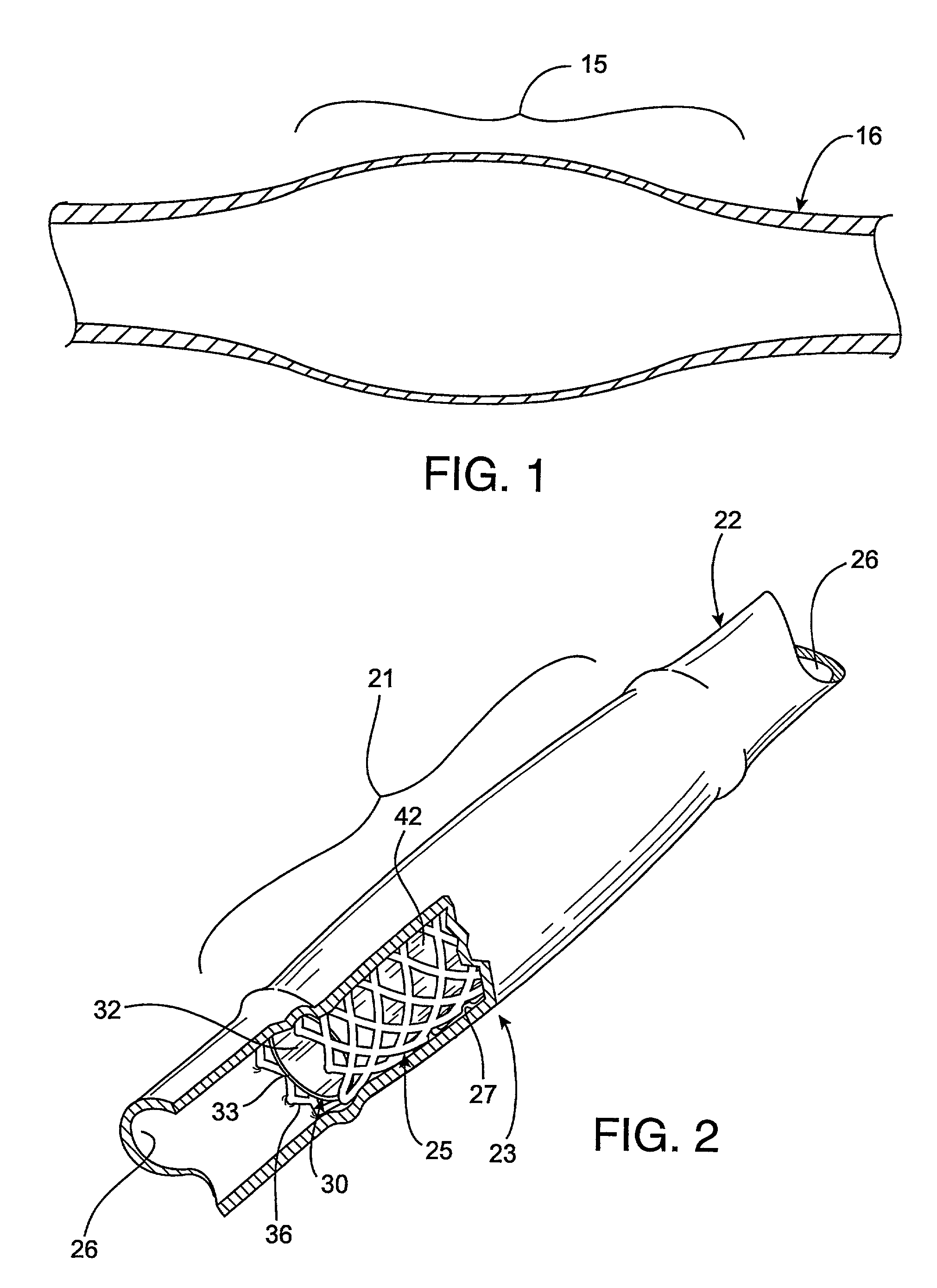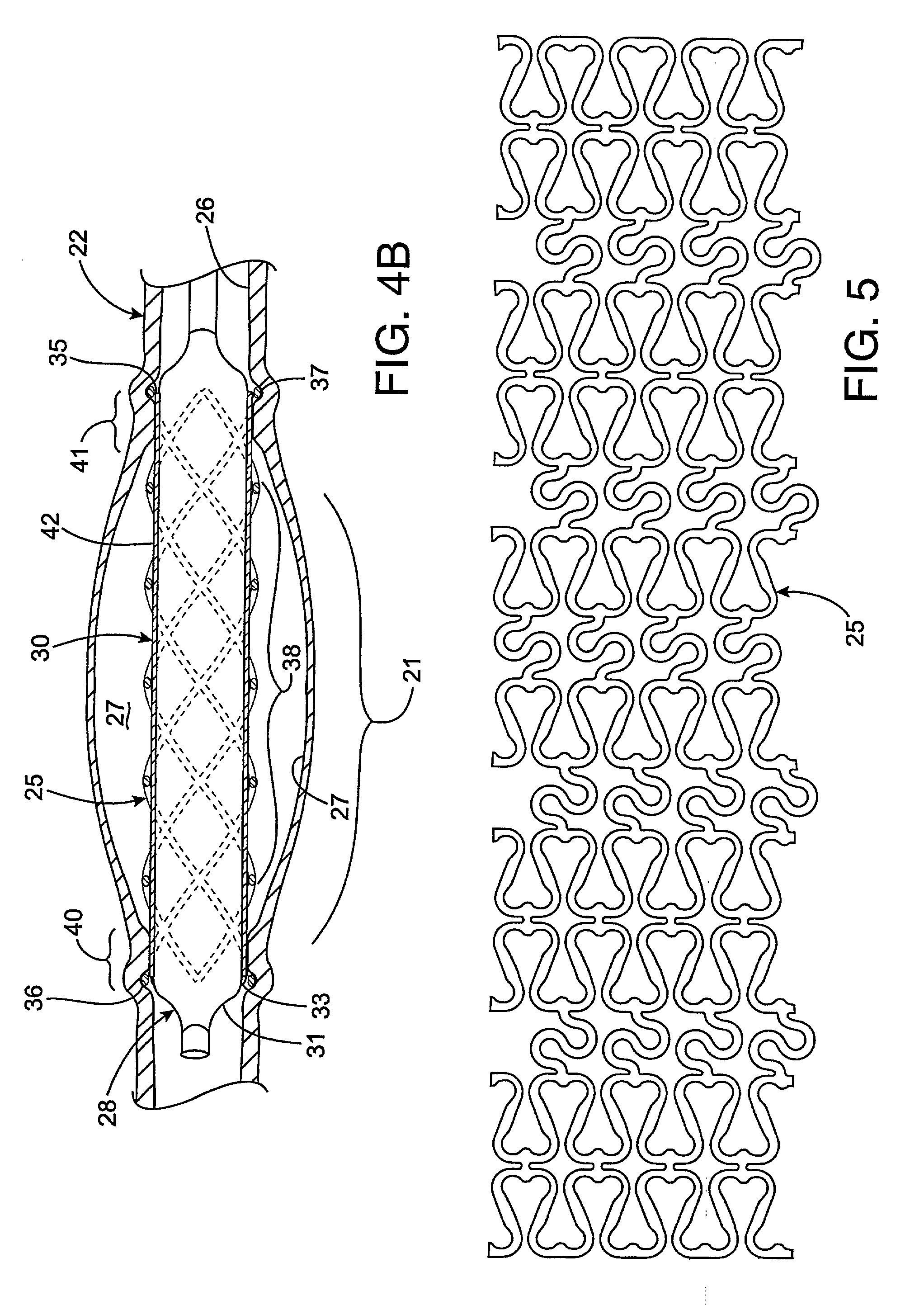Radioactive intraluminal endovascular prosthesis and method for the treatment of aneurysms
an endovascular and radioactive technology, applied in the field of radioactive intraluminal endovascular prosthesis and aneurysm treatment, can solve the problems of increasing the risk of rupture, increasing the morbidity rate, and being extremely invasive, and achieve the effect of maintaining the patency of the vessel
- Summary
- Abstract
- Description
- Claims
- Application Information
AI Technical Summary
Benefits of technology
Problems solved by technology
Method used
Image
Examples
experiment a
[0074] Overview: A radioactive stent in accordance with the present invention was placed within the artery and the vascular response to the irradiation was examined at different time points after the stent placement. The endovascular irradiation (brachytherapy) was observed using the IsoStent BX.TM. radioactive stents. The isotopes were Phosphorus 32 (.sup.32P) and Yttrium 90 (.sup.90Y). Briefly, .sup.32P is a pure beta-emitting particles with a half-life of 14.3 days, an average energy of 0.60 MeV, and a maximum energy of 1.7 MeV. The .sup.90Y is also a pure beta-emitting particles with a half-life of 2.7 days, an average energy of 0.90 MeV, and a maximum energy of 2.3 MeV. These radioactive stents were implanted in the coronary arteries of forty Yucatan miniature pigs, and the vascular response was analyzed for three (3) months after the implantation.
[0075] Stent Preparation: Proprietary stent of 15 mm length, tubular stainless steel IsoStent BX.TM. stents were made radioactive by...
PUM
 Login to View More
Login to View More Abstract
Description
Claims
Application Information
 Login to View More
Login to View More - R&D
- Intellectual Property
- Life Sciences
- Materials
- Tech Scout
- Unparalleled Data Quality
- Higher Quality Content
- 60% Fewer Hallucinations
Browse by: Latest US Patents, China's latest patents, Technical Efficacy Thesaurus, Application Domain, Technology Topic, Popular Technical Reports.
© 2025 PatSnap. All rights reserved.Legal|Privacy policy|Modern Slavery Act Transparency Statement|Sitemap|About US| Contact US: help@patsnap.com



